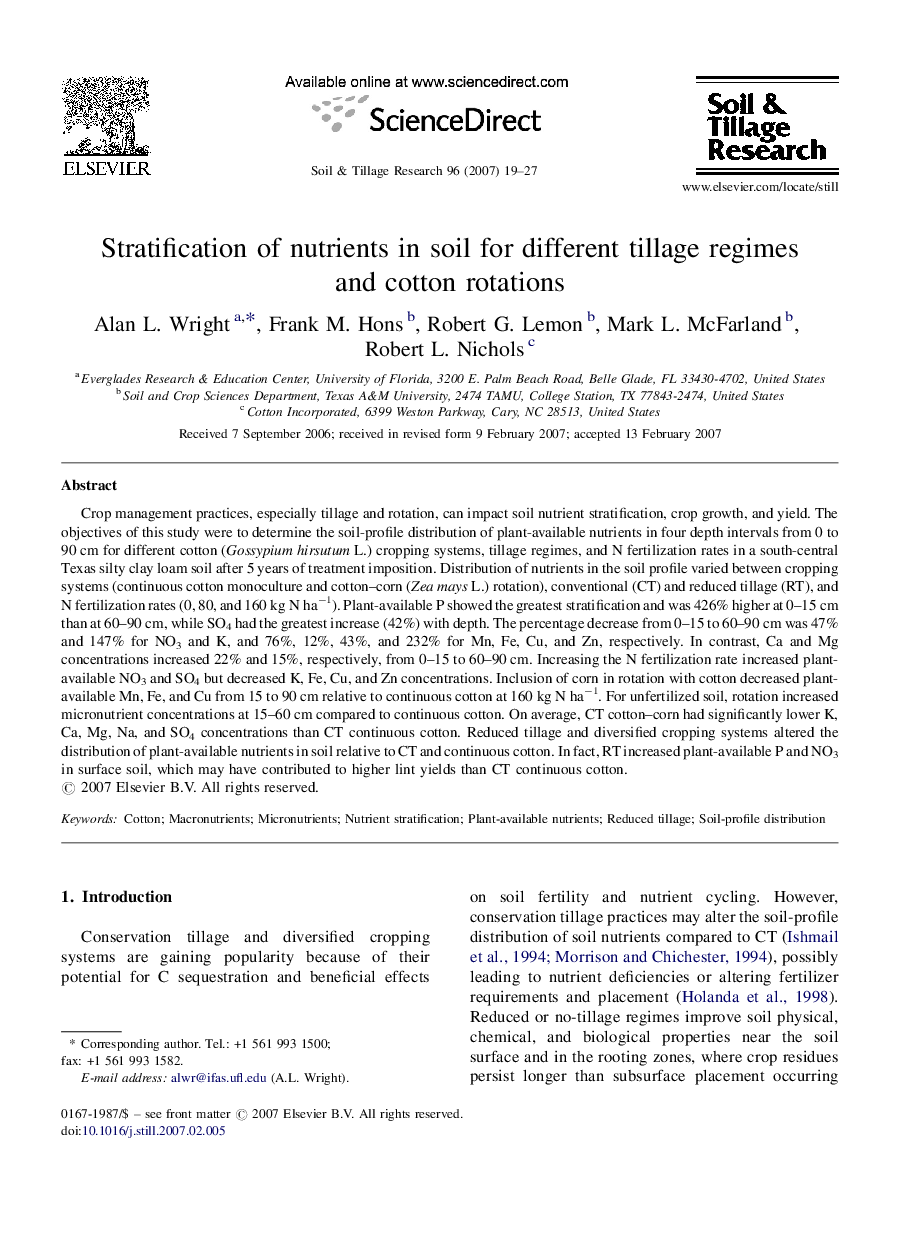| کد مقاله | کد نشریه | سال انتشار | مقاله انگلیسی | نسخه تمام متن |
|---|---|---|---|---|
| 306531 | 513101 | 2007 | 9 صفحه PDF | دانلود رایگان |

Crop management practices, especially tillage and rotation, can impact soil nutrient stratification, crop growth, and yield. The objectives of this study were to determine the soil-profile distribution of plant-available nutrients in four depth intervals from 0 to 90 cm for different cotton (Gossypium hirsutum L.) cropping systems, tillage regimes, and N fertilization rates in a south-central Texas silty clay loam soil after 5 years of treatment imposition. Distribution of nutrients in the soil profile varied between cropping systems (continuous cotton monoculture and cotton–corn (Zea mays L.) rotation), conventional (CT) and reduced tillage (RT), and N fertilization rates (0, 80, and 160 kg N ha−1). Plant-available P showed the greatest stratification and was 426% higher at 0–15 cm than at 60–90 cm, while SO4 had the greatest increase (42%) with depth. The percentage decrease from 0–15 to 60–90 cm was 47% and 147% for NO3 and K, and 76%, 12%, 43%, and 232% for Mn, Fe, Cu, and Zn, respectively. In contrast, Ca and Mg concentrations increased 22% and 15%, respectively, from 0–15 to 60–90 cm. Increasing the N fertilization rate increased plant-available NO3 and SO4 but decreased K, Fe, Cu, and Zn concentrations. Inclusion of corn in rotation with cotton decreased plant-available Mn, Fe, and Cu from 15 to 90 cm relative to continuous cotton at 160 kg N ha−1. For unfertilized soil, rotation increased micronutrient concentrations at 15–60 cm compared to continuous cotton. On average, CT cotton–corn had significantly lower K, Ca, Mg, Na, and SO4 concentrations than CT continuous cotton. Reduced tillage and diversified cropping systems altered the distribution of plant-available nutrients in soil relative to CT and continuous cotton. In fact, RT increased plant-available P and NO3 in surface soil, which may have contributed to higher lint yields than CT continuous cotton.
Journal: Soil and Tillage Research - Volume 96, Issues 1–2, October 2007, Pages 19–27